Korean War.
Follow @Mazana17The Korean War began when North Korea invaded South Korea. The United Nations, with the United States as the principal force, came to the aid of South Korea. China, with assistance from the Soviet Union, came to the aid of North Korea. The war arose from the division of Korea at the end of World War II and from the global tensions of the Cold War that developed immediately afterwards.
Clockwise from top: A column of the U.S. 1st Marine Division's infantry and armor moves through Chinese lines during their breakout from the Chosin Reservoir; UN landing at Incheon harbor, starting point of the Battle of Incheon; Korean refugees in front of an American M26 Pershing tank; U.S. Marines, led by First Lieutenant Baldomero Lopez, landing at Incheon; F-86 Sabre fighter aircraft.
Korea was ruled by Japan from 1910 until the closing days of World War II. In August 1945, the Soviet Union declared war on Japan, as a result of an agreement with the United States, and liberated Korea north of the 38th parallel. U.S. forces subsequently moved into the south. By 1948, as a product of the Cold War between the Soviet Union and the United States, Korea was split into two regions, with separate governments. Both governments claimed to be the legitimate government of Korea, and neither side accepted the border as permanent. The civil war escalated into open warfare when North Korean forces—supported by the Soviet Union and China—moved to the south to unite the country on 25 June, 1950.On that day, the United Nations Security Council recognized this North Korean act as invasion and called for an immediate ceasefire.On 27 June, the Security Council adopted S/RES/83: Complaint of aggression upon the Republic of Korea and decided the formation and dispatch of the UN Forces in Korea. Twenty-one countries of the United Nations eventually contributed to the defense of South Korea, with the United States providing 88% of the UN's military personnel.After the first two months of the conflict, South Korean forces were on the point of defeat, forced back to the Pusan Perimeter. In September 1950, an amphibious UN counter-offensive was launched at Inchon, and cut off many of the North Korean troops. Those that escaped envelopment and capture were rapidly forced back north all the way to the border with China at the Yalu River, or into the mountainous interior. At this point, in October 1950, Chinese forces crossed the Yalu and entered the war. Chinese intervention triggered a retreat of UN forces which continued until mid-1951. After these dramatic reversals of fortune, which saw Seoul change hands four times, the last two years of conflict became a war of attrition, with the front line close to the 38th parallel. The war in the air, however, was never a stalemate. North Korea was subject to a massive bombing campaign. Jet fighters confronted each other in air-to-air combat for the first time in history, and Soviet pilots covertly flew in defense of their communist allies.
The fighting ended on 27 July, 1953, when an armistice was signed. The agreement created the Korean Demilitarized Zone to separate North and South Korea, and allowed the return of prisoners. However, no peace treaty has been signed, and the two Koreas are technically still at war. Periodic clashes, many of which are deadly, have continued to the present.
Names
In the U.S., the war was initially described by President Harry S. Truman as a "police action" as it was an undeclared military action, conducted under the auspices of the United Nations.It has been referred to in the Anglosphere as "The Forgotten War" or "The Unknown War" because of the lack of public attention it received both during and after the war, and in relation to the global scale of World War II, which preceded it, and the subsequent angst of the Vietnam War, which succeeded it.In South Korea, the war is usually referred to as "625" or the "6–2–5 Upheaval" , yook-i-o dongnan), reflecting the date of its commencement on 25 June.
In North Korea, the war is officially referred to as the "Fatherland Liberation War" (Choguk haebang chǒnjaeng) or alternatively the "Chosǒn [Korean] War" (조선전쟁, Chosǒn chǒnjaeng).
In China, the war is officially called the "War to Resist U.S. Aggression and Aid Korea" (simplified Chinese: 抗美援朝战争; traditional Chinese: pinyin: Kàngměiyuáncháo zhànzhēng),although the term "Chaoxian (Korean) War" (simplified Chinese: 朝鲜战争; traditional Chinese: 朝鮮戰爭; pinyin: Cháoxiǎn zhànzhēng) is also used in unofficial contexts, along with the term "Korean Conflict" (simplified Chinese: 韩战; traditional Chinese: 韓戰; pinyin: Hán Zhàn) more commonly used in regions such as Hong Kong and Macau.
Course of the war
Outbreak of war (1950)
By 1949, South Korean forces had reduced the active number of communist guerrillas in the South from 5,000 to 1,000. However, Kim Il-sung believed that the guerrillas had weakened the South Korean military and that a North Korean invasion would be welcomed by much of the South Korean population. Kim began seeking Stalin's support for an invasion in March 1949, travelling to Moscow to attempt to persuade Stalin.
Initially, Stalin did not think the time was right for a war in Korea. Chinese Communist forces were still fighting in China. American forces were still stationed in South Korea (they would complete their withdrawal in June 1949) and Stalin did not want the Soviet Union to become embroiled in a war with the United States.
By spring 1950, Stalin believed the strategic situation had changed. The Soviets had detonated their first nuclear bomb in September 1949; American soldiers had fully withdrawn from Korea; the Americans had not intervened to stop the communist victory in China, and Stalin calculated that the Americans would be even less willing to fight in Korea—which had seemingly much less strategic significance. The Soviets had also cracked the codes used by the US to communicate with the US embassy in Moscow, and reading these dispatches convinced Stalin that Korea did not have the importance to the US that would warrant a nuclear confrontation. Stalin began a more aggressive strategy in Asia based on these developments, including promising economic and military aid to China through the Sino–Soviet Friendship, Alliance, and Mutual Assistance Treaty.
Throughout 1949 and 1950 the Soviets continued to arm North Korea. After the Communist victory in the Chinese Civil War, ethnic Korean units in the Chinese People's Liberation Army (PLA) were released to North Korea.The combat veterans from China, the tanks, artillery and aircraft supplied by the Soviets, and rigorous training increased North Korea's military superiority over the South, which had been armed by the American military with mostly small arms and given no heavy weaponry such as tanks.
In April 1950, Stalin gave Kim permission to invade the South under the condition that Mao would agree to send reinforcements if they became needed. Stalin made it clear that Soviet forces would not openly engage in combat, to avoid a direct war with the Americans. Kim met with Mao in May 1950. Mao was concerned that the Americans would intervene but agreed to support the North Korean invasion. China desperately needed the economic and military aid promised by the Soviets. At that time, the Chinese were in the process of demobilizing half of the PLA's 5.6 million soldiers.However, Mao sent more ethnic Korean PLA veterans to Korea and promised to move an army closer to the Korean border. Once Mao's commitment was secured, preparations for war accelerated.
Soviet generals with extensive combat experience from the Second World War were sent to North Korea as the Soviet Advisory Group. These generals completed the plans for the attack by May. The original plans called for a skirmish to be initiated in the Ongjin Peninsula on the west coast of Korea. The North Koreans would then launch a "counterattack" that would capture Seoul and encircle and destroy the South Korean army. The final stage would involve destroying South Korean government remnants, capturing the rest of South Korea, including the ports.
On 7 June 1950, Kim Il-sung called for a Korea-wide election on 5–8 August 1950 and a consultative conference in Haeju on 15–17 June 1950. On 11 June, the North sent three diplomats to the South, as a peace overture that Rhee rejected.On 21 June, Kim Il-Sung revised his war plan to involve general attack across the 38th parallel, rather than a limited operation in the Ongjin peninsula. Kim was concerned that South Korean agents had learned about the plans and South Korean forces were strengthening their defenses. Stalin agreed to this change of plan.
While these preparations were underway in the North, there were frequent clashes along the 38th parallel, especially at Kaesong and Ongjin, many initiated by the South.The Republic of Korea Army (ROK Army) was being trained by the U.S. Korean Military Advisory Group (KMAG). On the eve of war, KMAG's commander General William Lynn Roberts voiced utmost confidence in the ROK Army and boasted that any North Korean invasion would merely provide "target practice". For his part, Syngman Rhee repeatedly expressed his desire to conquer the North, including when American diplomat John Foster Dulles visited Korea on 18 June.
Although some South Korean and American intelligence officers were predicting an attack from the North, similar predictions had been made before and nothing had eventuated. The Central Intelligence Agency did note the southward movement by the Korean People's Army (KPA), but assessed this as a "defensive measure" and concluded an invasion was "unlikely". On 23 June, UN observers inspected the border and did not detect that war was imminent.
Whoever fired the first shots in Ongjin, within an hour, North Korean forces attacked all along the 38th parallel. The North Koreans had a combined arms force including tanks supported by heavy artillery. The South Koreans did not have any tanks, anti-tank weapons, nor heavy artillery, that could stop such an attack. In addition, South Koreans committed their forces in a piecemeal fashion and these were routed within a few days.
On 27 June, Rhee evacuated from Seoul with some of the government. On 28 June, at 2 am, the South Korean Army blew up the highway bridge across the Han River in an attempt to stop the North Korean army. The bridge was detonated while 4,000 refugees were crossing the bridge, and hundreds were killed. Destroying the bridge also trapped many South Korean military units north of the Han River.In spite of such desperate measures, Seoul fell that same day. A number of South Korean National Assemblymen remained in Seoul when it fell, and forty-eight subsequently pledged allegiance to the North.
On 28 June, Rhee ordered the massacre of suspected political opponents in his own country.
In five days, the South Korean forces, which had 95,000 men on 25 June, was down to less than 22,000 men. In early July, when U.S. forces arrived, what was left of the South Korean forces were placed under U.S. operational command of the United Nations Command.
Factors in US intervention
The Truman administration was unprepared for the invasion. Korea was not included in the strategic Asian Defense Perimeter outlined by Secretary of State Dean Acheson. Military strategists were more concerned with the security of Europe against the Soviet Union than East Asia. At the same time, the Administration was worried that a war in Korea could quickly widen into another world war should the Chinese or Soviets decide to get involved as well.One facet of the changing attitude toward Korea and whether to get involved was Japan. Especially after the fall of China to the Communists, U.S. East Asian experts saw Japan as the critical counterweight to the Soviet Union and China in the region. While there was no United States policy that dealt with South Korea directly as a national interest, its proximity to Japan increased the importance of South Korea. Said Kim: "The recognition that the security of Japan required a non-hostile Korea led directly to President Truman's decision to intervene... The essential point... is that the American response to the North Korean attack stemmed from considerations of US policy toward Japan."
A major consideration was the possible Soviet reaction in the event that the US intervened. The Truman administration was fretful that a war in Korea was a diversionary assault that would escalate to a general war in Europe once the United States committed in Korea. At the same time, "[t]here was no suggestion from anyone that the United Nations or the United States could back away from [the conflict]". Yugoslavia–a possible Soviet target because of the Tito-Stalin Split—was vital to the defense of Italy and Greece, and the country was first on the list of the National Security Council's post-North Korea invasion list of "chief danger spots". Truman believed if aggression went unchecked a chain reaction would be initiated that would marginalize the United Nations and encourage Communist aggression elsewhere. The UN Security Council approved the use of force to help the South Koreans and the US immediately began using what air and naval forces that were in the area to that end. The Administration still refrained from committing on the ground because some advisers believed the North Koreans could be stopped by air and naval power alone.
The Truman administration was still uncertain if the attack was a ploy by the Soviet Union or just a test of U.S. resolve. The decision to commit ground troops became viable when a communiqué was received on 27 June indicating the Soviet Union would not move against U.S. forces in Korea. The Truman administration now believed it could intervene in Korea without undermining its commitments elsewhere.
United Nations Security Council Resolutions
Further information: List of United Nations Security Council resolutions concerning North Korea
On 25 June 1950, the United Nations Security Council unanimously condemned the North Korean invasion of the Republic of Korea, with UN Security Council Resolution 82. The Soviet Union, a veto-wielding power, had boycotted the Council meetings since January 1950, protesting that the Republic of China (Taiwan), not the People's Republic of China, held a permanent seat in the UN Security Council. After debating the matter, the Security Council, on 27 June 1950, published Resolution 83 recommending member states provide military assistance to the Republic of Korea. On 27 June President Truman
ordered U.S. air and sea forces to help the South Korean regime. On 4
July the Soviet Deputy Foreign Minister accused the United States of
starting armed intervention on behalf of South Korea.The Soviet Union challenged the legitimacy of the war for several reasons. The ROK Army intelligence upon which Resolution 83 was based came from U.S. Intelligence; North Korea was not invited as a sitting temporary member of the UN, which violated UN Charter Article 32; and the Korean conflict was beyond the UN Charter's scope, because the initial north–south border fighting was classed as a civil war. Because the Soviet Union was boycotting the Security Council at the time, legal scholars posited that deciding upon an action of this type required the unanimous vote of the five permanent members.
Comparison of military forces
In contrast, the ROK Army defenders were relatively unprepared and ill-equipped. In South to the Naktong, North to the Yalu (1961), R.E. Appleman reports the ROK forces' low combat readiness as of 25 June 1950. The ROK Army had 98,000 soldiers (65,000 combat, 33,000 support), no tanks (they had been requested from the U.S. military, but requests were denied), and a 22-piece air force comprising 12 liaison-type and 10 AT6 advanced-trainer airplanes. There were no large foreign military garrisons in Korea at the time of the invasion, but there were large U.S. garrisons and air forces in Japan.
Within days of the invasion, masses of ROK Army soldiers—of dubious loyalty to the Syngman Rhee regime—were either retreating southwards or were defecting en masse to the northern side, the KPA.
United Nations response (July – August 1950)
On Saturday, 24 June 1950, U.S. Secretary of State Dean Acheson informed President Truman that the North Koreans had invaded South Korea.Truman and Acheson discussed a U.S. invasion response and agreed that the United States was obligated to act, paralleling the North Korean invasion with Adolf Hitler's aggressions in the 1930s, with the conclusion being that the mistake of appeasement must not be repeated. Several U.S. industries were mobilized to supply materials, labor, capital, production facilities, and other services necessary to support the military objectives of the Korean War. However, President Truman later acknowledged that he believed fighting the invasion was essential to the American goal of the global containment of communism as outlined in the National Security Council Report 68 (NSC-68) (declassified in 1975):Communism was acting in Korea, just as Hitler, Mussolini and the Japanese had ten, fifteen, and twenty years earlier. I felt certain that if South Korea was allowed to fall, Communist leaders would be emboldened to override nations closer to our own shores. If the Communists were permitted to force their way into the Republic of Korea without opposition from the free world, no small nation would have the courage to resist threat and aggression by stronger Communist neighbors.In August 1950, the President and the Secretary of State obtained the consent of Congress to appropriate $12 billion for military action in Korea.
As an initial response, Truman called for a naval blockade of North Korea, and was shocked to learn that such a blockade could be imposed only 'on paper', since the U.S. Navy no longer had the warships with which to carry out his request. In fact, because of the extensive defense cuts and the emphasis placed on building a nuclear bomber force, none of the services were in a position to make a robust response with conventional military strength. General Omar Bradley, Chairman of the Joint Chiefs of Staff, was faced with re-organizing and deploying an American military force that was a shadow of its World War II counterpart. The impact of the Truman administration's defense budget cutbacks were now keenly felt, as American troops fought a series of costly rearguard actions. Lacking sufficient anti-tank weapons, artillery or armor, they were driven back down the Korean peninsula to Pusan. In a postwar analysis of the unpreparedness of U.S. Army forces deployed to Korea during the summer and fall of 1950, Army Major General Floyd L. Parks stated that "Many who never lived to tell the tale had to fight the full range of ground warfare from offensive to delaying action, unit by unit, man by man ... [T]hat we were able to snatch victory from the jaws of defeat ... does not relieve us from the blame of having placed our own flesh and blood in such a predicament."
Acting on State Secretary Acheson's recommendation, President Truman ordered General MacArthur to transfer matériel to the Army of the Republic of Korea while giving air cover to the evacuation of U.S. nationals. The President disagreed with advisers who recommended unilateral U.S. bombing of the North Korean forces, and ordered the US Seventh Fleet to protect the Republic of China (Taiwan), whose government asked to fight in Korea. The United States denied ROC's request for combat, lest it provoke a communist Chinese retaliation.Because the United States had sent the Seventh Fleet to "neutralize" the Taiwan Strait, Chinese premier Zhou Enlai criticized both the UN and U.S. initiatives as "armed aggression on Chinese territory."
The Battle of Osan, the first significant American engagement of the Korean War, involved the 540-soldier Task Force Smith, which was a small forward element of the 24th Infantry Division which had been flown in from Japan. On 5 July 1950, Task Force Smith attacked the North Koreans at Osan but without weapons capable of destroying the North Koreans' tanks. They were unsuccessful; the result was 180 dead, wounded, or taken prisoner. The KPA progressed southwards, pushing back the US force at Pyongtaek, Chonan, and Chochiwon, forcing the 24th Division's retreat to Taejeon, which the KPA captured in the Battle of Taejon; the 24th Division suffered 3,602 dead and wounded and 2,962 captured, including the Division's Commander, Major General William F. Dean.
By August, the KPA had pushed back the ROK Army and the Eighth United States Army to the vicinity of Pusan in southeast Korea.In their southward advance, the KPA purged the Republic of Korea's intelligentsia by killing civil servants and intellectuals. On 20 August, General MacArthur warned North Korean leader Kim Il-sung that he was responsible for the KPA's atrocities. By September, the UN Command controlled the Pusan perimeter, enclosing about 10% of Korea, in a line partially defined by the Nakdong River.
Although Kim's early successes had led him to predict that he would end the war by the end of August, Chinese leaders were more pessimistic. To counter a possible U.S. deployment, Zhou Enlai secured a Soviet commitment to have the Soviet Union support Chinese forces with air cover, and deployed 260,000 soldiers along the Korean border, under the command of Gao Gang. Zhou commanded Chai Chengwen to conduct a topographical survey of Korea, and directed Lei Yingfu, Zhou's military advisor in Korea, to analyze the military situation in Korea. Lei concluded that MacArthur would most likely attempt a landing at Incheon. After conferring with Mao that this would be MacArthur's most likely strategy, Zhou briefed Soviet and North Korean advisers of Lei's findings, and issued orders to Chinese army commanders deployed on the Korean border to prepare for American naval activity in the Korea Strait.
Escalation (August – September 1950)
In the resulting Battle of Pusan Perimeter (August–September 1950), the U.S. Army withstood KPA attacks meant to capture the city at the Naktong Bulge, P'ohang-dong, and Taegu. The United States Air Force (USAF) interrupted KPA logistics with 40 daily ground support sorties that destroyed 32 bridges, halting most daytime road and rail traffic. KPA forces were forced to hide in tunnels by day and move only at night. To deny matériel to the KPA, the USAF destroyed logistics depots, petroleum refineries, and harbors, while the U.S. Navy air forces attacked transport hubs. Consequently, the over-extended KPA could not be supplied throughout the south. On 27 August, 67th Fighter Squadron aircraft mistakenly attacked facilities in Chinese territory and the Soviet Union called the UN Security Council's attention to China's complaint about the incident. The US proposed that a commission of India and Sweden determine what the US should pay in compensation but the Soviets vetoed the US proposal.Meanwhile, U.S. garrisons in Japan continually dispatched soldiers and matériel to reinforce defenders in the Pusan Perimeter. Tank battalions deployed to Korea directly from the U.S. mainland from the port of San Francisco to the port of Pusan, the largest Korean port. By late August, the Pusan Perimeter had some 500 medium tanks battle-ready.In early September 1950, ROK Army and UN Command forces outnumbered the KPA 180,000 to 100,000 soldiers. The UN forces, once prepared, counterattacked and broke out of the Pusan Perimeter.
Battle of Inchon (September 1950)
Main article: Battle of Inchon
Against the rested and re-armed Pusan Perimeter defenders and their
reinforcements, the KPA were undermanned and poorly supplied; unlike the
UN Command, they lacked naval and air support. To relieve the Pusan Perimeter, General MacArthur recommended an amphibious landing at Inchon (now known as Incheon), near Seoul and well over 100 miles (160 km) behind the KPA lines. On 6 July, he ordered Major General Hobart R. Gay, Commander, 1st Cavalry Division, to plan the division's amphibious landing at Incheon; on 12–14 July, the 1st Cavalry Division embarked from Yokohama, Japan to reinforce the 24th Infantry Division inside the Pusan Perimeter.After the Incheon landing, the 1st Cavalry Division began its northward advance from the Pusan Perimeter. "Task Force Lynch" (after Lieutenant Colonel James H. Lynch), 3rd Battalion, 7th Cavalry Regiment, and two 70th Tank Battalion units (Charlie Company and the Intelligence–Reconnaissance Platoon) effected the "Pusan Perimeter Breakout" through 106.4 miles (171.2 km) of enemy territory to join the 7th Infantry Division at Osan. The X Corps rapidly defeated the KPA defenders around Seoul, thus threatening to trap the main KPA force in Southern Korea.
On 18 September, Stalin dispatched General H. M. Zakharov to Korea to advise Kim Il-sung to halt his offensive around the Pusan perimeter and to redeploy his forces to defend Seoul. Chinese commanders were not briefed on North Korean troop numbers or operational plans. As the overall commander of Chinese forces, Zhou Enlai suggested that the North Koreans should attempt to eliminate the enemy forces at Inchon only if they had reserves of at least 100,000 men; otherwise, he advised the North Koreans to withdraw their forces north.
On 25 September, Seoul was recaptured by South Korean forces. American air raids caused heavy damage to the KPA, destroying most of its tanks and much of its artillery. North Korean troops in the south, instead of effectively withdrawing north, rapidly disintegrated, leaving Pyongyang vulnerable. During the general retreat only 25,000 to 30,000 soldiers managed to rejoin the Northern KPA lines. On 27 September, Stalin convened an emergency session of the Politburo, in which he condemned the incompetence of the KPA command and held Soviet military advisers responsible for the defeat.
UN forces cross partition line (September – October 1950)
Main article: UN Offensive, 1950
On 27 September, MacArthur received the top secret National Security
Council Memorandum 81/1 from Truman reminding him that operations north
of the 38th parallel were authorized only if "at the time of such
operation there was no entry into North Korea by major Soviet or Chinese
Communist forces, no announcements of intended entry, nor a threat to
counter our operations militarily..."On 29 September MacArthur restored the government of the Republic of Korea under Syngman Rhee. On 30 September, Defense Secretary George Marshall
sent an eyes-only message to MacArthur: "We want you to feel unhampered
tactically and strategically to proceed north of the 38th parallel." During October, the ROK police executed people who were suspected to be sympathetic to North Korea,and similar massacres were carried out until early 1951.On 30 September, Zhou Enlai warned the United States that China was prepared to intervene in Korea if the United States crossed the 38th parallel. Zhou attempted to advise North Korean commanders on how to conduct a general withdrawal by using the same tactics which had allowed Chinese communist forces to successfully escape Chiang Kai-shek's Encirclement Campaigns in the 1930s, but by some accounts North Korean commanders did not utilize these tactics effectively. Historian Bruce Cumings argues, however, the KPA's rapid withdrawal was strategic, with troops melting into the mountains from where they could launch guerrilla raids on the UN forces spread out on the coasts.
By 1 October 1950, the UN Command repelled the KPA northwards past the 38th parallel; the ROK Army crossed after them, into North Korea. MacArthur made a statement demanding the KPA's unconditional surrender. Six days later, on 7 October, with UN authorization, the UN Command forces followed the ROK forces northwards. The X Corps landed at Wonsan (in southeastern North Korea) and Riwon (in northeastern North Korea), already captured by ROK forces. The Eighth U.S. Army and the ROK Army drove up western Korea and captured Pyongyang city, the North Korean capital, on 19 October 1950. The 187th Airborne Regimental Combat Team ("Rakkasans") made their first of two combat jumps during the Korean War on 20 October 1950 at Sunchon and Sukchon.
The missions of the 187th were to cut the road north going to China, preventing North Korean leaders from escaping from Pyongyang; and to rescue American prisoners of war. At month's end, UN forces held 135,000 KPA prisoners of war. As they neared the Sino-Korean border, the UN forces in the west were divided from those in the east by 50–100 miles of mountainous terrain.
Taking advantage of the UN Command's strategic momentum against the communists, General MacArthur believed it necessary to extend the Korean War into China to destroy depots supplying the North Korean war effort. President Truman disagreed, and ordered caution at the Sino-Korean border.
To continue, please click here
For more News and Entertainments, follow Us at our Social Network :
Follow @Mazana17

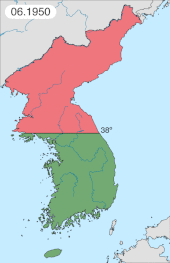




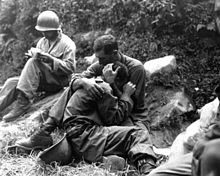
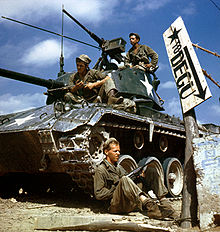
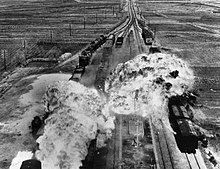
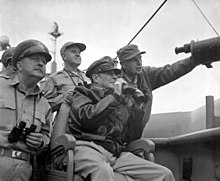
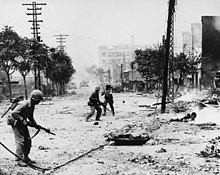

No comments :
Post a Comment